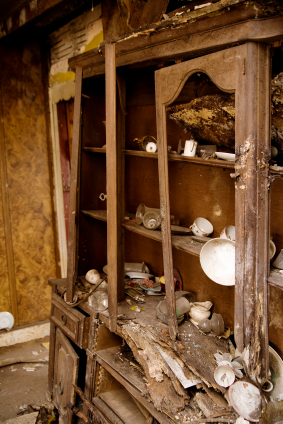 Property claims databases can be a treasure trove of insights, and can shine a light on valuable opportunities and trends. For instance, I've been mining data that indicates an average overpayment of at least 50 percent on several common elements of residential claims, namely damage to cabinets and furniture. Data extrapolated from a report generated by Xactware for 2009 upper and lower cabinet claims shows such claims-paid totals exceeded $1 billion in the review period. That means that the amount of overpayments likely exceeded $500 to $600 million, while customer satisfaction likely suffered.
Property claims databases can be a treasure trove of insights, and can shine a light on valuable opportunities and trends. For instance, I've been mining data that indicates an average overpayment of at least 50 percent on several common elements of residential claims, namely damage to cabinets and furniture. Data extrapolated from a report generated by Xactware for 2009 upper and lower cabinet claims shows such claims-paid totals exceeded $1 billion in the review period. That means that the amount of overpayments likely exceeded $500 to $600 million, while customer satisfaction likely suffered.
The totals I cited would be far higher if costs related to replacement—for example, electrical, plumbing, flooring, counter tops, molding—were included. However, for illustrative purposes, I counted only item-specific replacement costs, those being the $650 million for upper and lower cabinets. Our records at National Restorations LLC show that approximately 75 percent of cabinet claims are candidates for restoration at a cost of 50 to 60 percent of full replacement. Additional data from the five-state area surrounding our location in Richmond, Va. shows that furniture replacement estimates over the last four years have been similar to the cabinets in frequency and amount.
Understanding the Trend
Recommended For You
Want to continue reading?
Become a Free PropertyCasualty360 Digital Reader
Your access to unlimited PropertyCasualty360 content isn’t changing.
Once you are an ALM digital member, you’ll receive:
- Breaking insurance news and analysis, on-site and via our newsletters and custom alerts
- Weekly Insurance Speak podcast featuring exclusive interviews with industry leaders
- Educational webcasts, white papers, and ebooks from industry thought leaders
- Critical converage of the employee benefits and financial advisory markets on our other ALM sites, BenefitsPRO and ThinkAdvisor
Already have an account? Sign In Now
© Touchpoint Markets, All Rights Reserved. Request academic re-use from www.copyright.com. All other uses, submit a request to [email protected]. For more inforrmation visit Asset & Logo Licensing.







